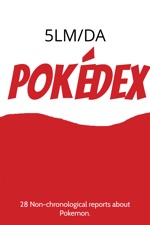As previously written about, we're always looking for ways to enthuse learners, engage them in their learning journey and provide them with an audience.
In the past we've tried writing non-chronological reports about the following with children: instruments (it was a link to making instruments in design and technology, but the children's research about what to write about let them down), Anglo-Saxons (again subject knowledge let them down despite it being a cross curricular link), David Beckham (subject knowledge was ok, but some children got events mixed up) and other relevant subjects.
In the autumn term 2016, many of the children in our school have been captivated by Pokemon and Pokemon Go. As a result, we decided this would be the topic for our forthcoming non-chronological writing. What? a non-fiction text type being written about a fictional topic? can that be done? looks like it: "Harry Potter - The Character Vault" & "The Pokémon Encyclopedia, Official" for a start.
Our hopes: the majority of children who are often turned off by writing would be engaged by this, those who already enjoy writing would still do so and that the few left 'in the middle' could be encouraged by the others. In addition, the children would be writing a report about a 'new' Pokemon, a Pokemon they would invent. Subject knowledge needed? No, because they're creating the creature. Can what they write be wrong? No, it's their creature. They can focus on report style and layout. What if anyone really doesn't want to write about a Pokemon? They can write about a mythical creature (shhh, that's what a Pokemon is!)
How did it go? Over the three weeks, we designed the area in which our Pokemon would live, learned about how Pokemon my act and interact and what attributes they may posses. At the same time, learning about report layout, style and contents. This meant that when it came to writing, the children were about to write about a Pokemon in the correct way. We wrote a first draft and then a second draft in Book Creator.
We have created the children an audience in a number of ways:
- iBooks ePub;
- as a PDF;
- putting up a Pokemon Go-style activity around the school site (print and use if you'd like to);
We believe we've stayed within Copyright with this process as we've only used Pokemon as a prompt. We certainly engaged 120 Year Five pupils. We'd love to hear about your non-chronological report writing.


